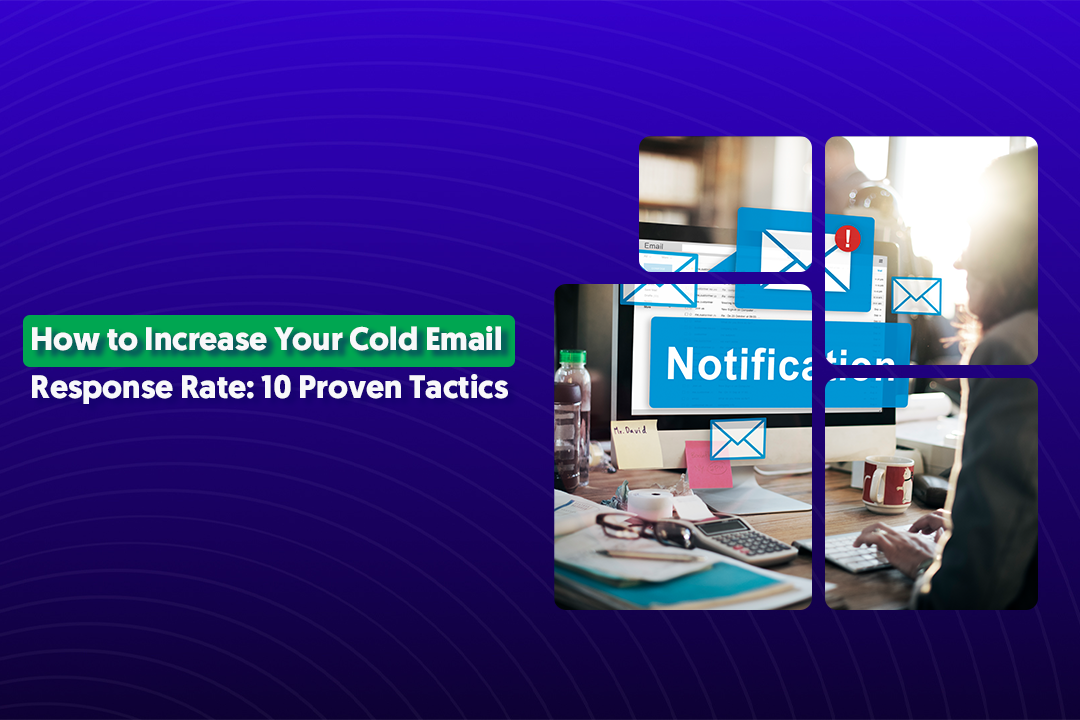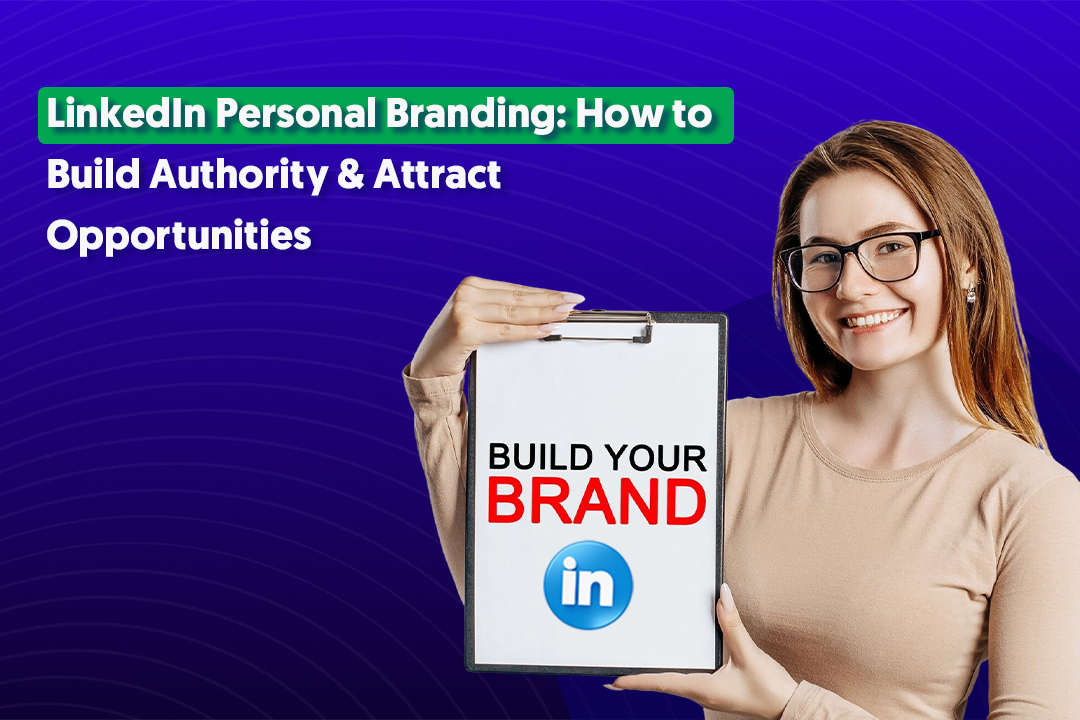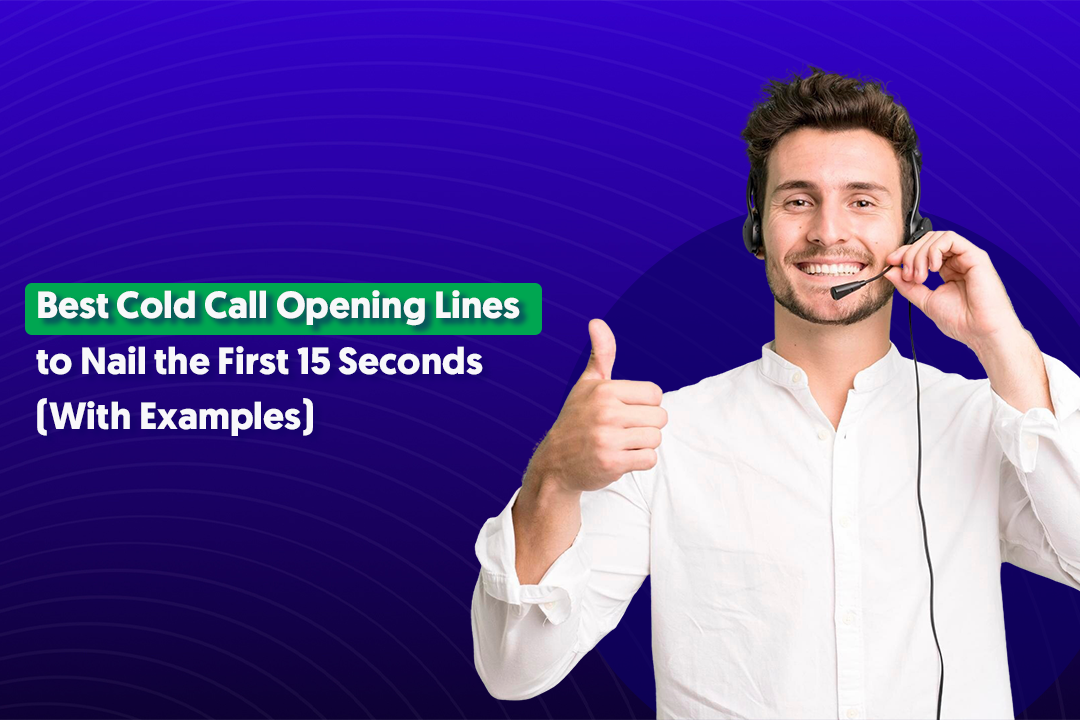Table of Content
Key Takeaways
- A lead generation funnel guides prospects from awareness to conversion with clear, intentional steps.
- Funnels ensure no leads get lost, making growth more predictable in 2025.
- The main stages are Awareness, Interest, Consideration, and Conversion.
- A B2B lead generation funnel should align with your buyer journey, not just your sales process.
- Using templates, automation, and analytics keeps funnels consistent and scalable.
If you want predictable growth in 2025, you can’t rely on scattered outreach or one-off campaigns. You need a lead generation funnel, a structured path that guides prospects from first contact all the way to becoming paying customers.
Think of your B2B lead generation funnel as the backbone of your marketing and sales process. It ensures no lead slips through the cracks, every touchpoint is intentional, and prospects get exactly what they need to move forward.
Without a B2B funnel, it’s easy for interested buyers to lose interest or disappear before you ever get a chance to close the deal.
Buyer behavior is also changing fast. Today’s decision-makers do their research, compare multiple solutions, and expect personalized communication before they even talk to sales.
That’s why building an optimized lead generation sales funnel isn’t optional anymore—it’s the only way to consistently attract, nurture, and convert the right leads.
In this guide, we’ll walk you through how to build a high-converting funnel in 2025 and show you how we at Cleverly use LinkedIn outreach, cold email, and cold calling to turn prospects into real sales opportunities.
What Is a Lead Generation Funnel?
A lead generation funnel is the step-by-step process that takes someone from being a stranger to becoming a qualified lead—and eventually, a paying customer.
Instead of hoping prospects move forward on their own, a funnel creates a clear path that guides them through each stage of the buying journey.
At its core, a lead generation funnel has three main purposes:
- Capturing leads – attracting the right audience through channels like LinkedIn outreach, cold emailing, and cold calling.
- Nurturing leads – providing valuable touchpoints that build trust and keep prospects engaged.
- Converting leads – moving prospects from interest to decision, turning them into booked calls and closed deals.
Many people confuse a lead generation funnel with a sales pipeline, but they’re not the same thing:
- A lead gen funnel focuses on how potential buyers move through the marketing journey, awareness, interest, and consideration.
- A sales pipeline shows the internal stages your sales team uses once a lead is qualified, like discovery calls, proposals, and negotiations.
In other words, your lead generation sales funnel is about attracting and nurturing the right leads, while your sales pipeline is about closing them once they’re ready to buy.
Both are essential, but they play very different roles in driving consistent B2B growth.
Lead Generation Funnel vs. Sales Funnel
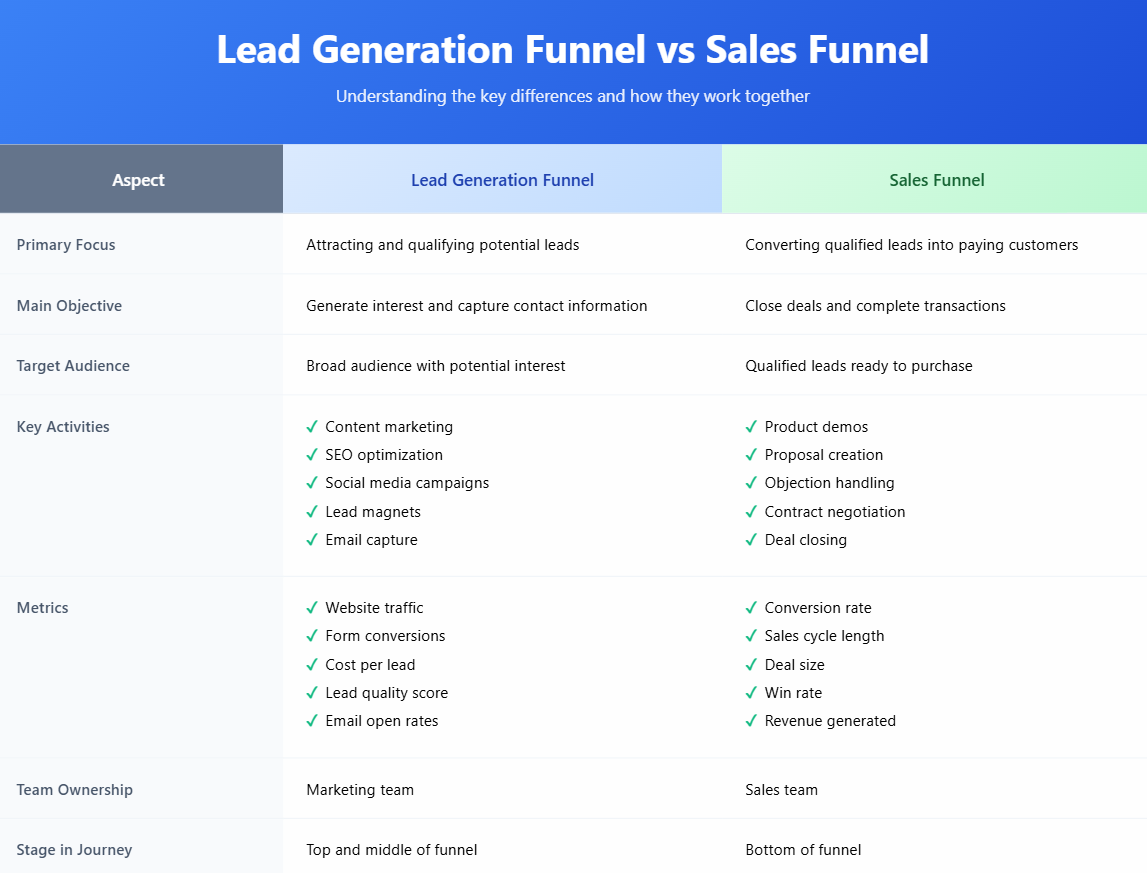
How the two work together in a full buyer journey

While a lead generation funnel vs. sales funnel comparison highlights their differences, the truth is they work best when used together.
The lead gen funnel brings prospects into your world, nurtures them with the right messaging, and qualifies them for sales.
Once they’re ready, the sales funnel takes over to guide them through proposals, negotiations, and closing.
Why B2B companies need both

For B2B companies, having both is non-negotiable. Without a lead generation funnel, your sales team doesn’t have a steady flow of qualified leads to work with.
Without a sales funnel, the leads you worked hard to capture won’t have a clear path to becoming customers.
Together, they create a seamless buyer journey, from first touch to signed contract, that fuels predictable, scalable growth.
Stages of a High-Converting Lead Generation Funnel
A lead generation sales funnel isn’t just a buzzword, it’s a structured process that turns curiosity into real business opportunities.
To make it work, you need to guide prospects through four key stages: Awareness, Interest, Consideration, and Conversion.
Each stage requires its own strategy and touchpoints to keep leads moving forward.
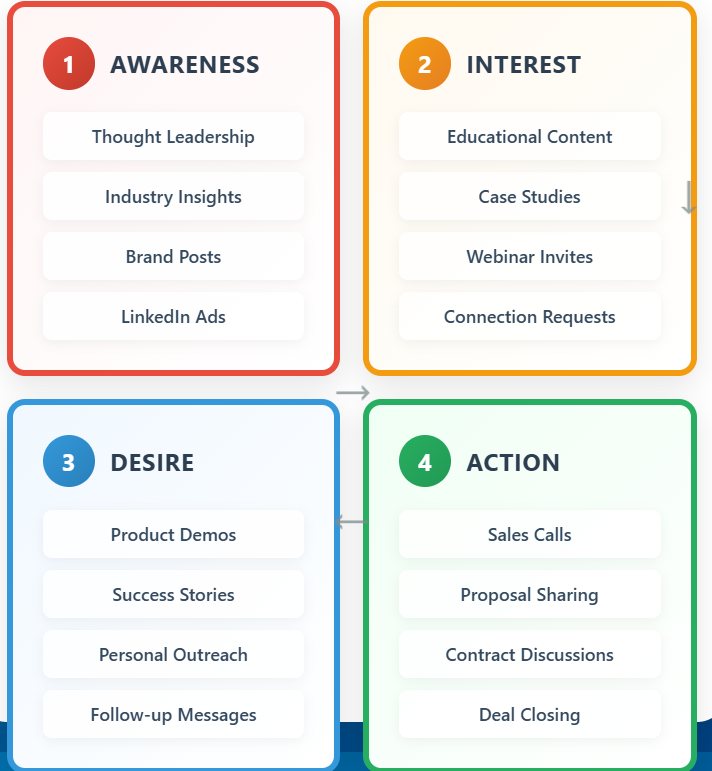
1. Awareness – Putting Your Brand on the Radar
At this stage, your goal is to make prospects aware that you exist. They’re not ready to buy yet, but they’re starting to explore solutions.
- How to drive awareness: SEO blogs, LinkedIn outreach, paid ads, social content.
📌 Example: A targeted LinkedIn message, an ad promoting a thought-leadership guide, or an organic post that gets shared within your industry.
2. Interest – Getting Prospects to Lean In
Once you have attention, you need to capture it with something valuable. This stage is about turning casual visitors into leads by offering them a reason to engage.
- How to spark interest: Lead magnets, webinars, case studies, industry reports.
📌 Example: A free LinkedIn outreach checklist, a cold email offering a case study on ROI, or a webinar invite about scaling outbound sales.
3. Consideration – Nurturing Trust and Authority
Prospects are now evaluating options. They’re comparing you with competitors, reading reviews, and deciding if you’re worth their time. Consistent nurturing is key here.
- How to nurture leads: Email sequences, retargeting ads, free trials, personalized follow-ups.
📌 Example: An email drip campaign that shares success stories, a LinkedIn remarketing ad showing customer testimonials, or a free audit offer.
4. Conversion – Turning Leads Into Opportunities
This is where the magic happens—when a lead takes action and becomes a real opportunity. The focus here is on reducing friction and making it easy for prospects to say “yes.”
- How to convert leads: Strategy calls, demos, direct calendar booking links.
📌 Example: A cold email CTA to “book a call,” a LinkedIn DM with a Calendly link, or a sales call where objections are addressed.
When each of these stages works together, your lead generation sales funnel becomes a predictable system that keeps your pipeline full.
Instead of chasing random prospects, you’re steadily moving the right leads from awareness all the way to conversion.
How to Build a B2B Lead Generation Funnel in 2025
Building a B2B lead generation funnel in today’s market requires more than just collecting emails and hoping for the best.
Buyers are smarter, competition is tougher, and attention spans are shorter.
To win, you need a funnel that’s laser-focused on your ideal customer, provides real value, and uses automation to move leads forward without slipping through the cracks. Here’s how to do it step by step.
1. Define Your ICP (Ideal Customer Profile)
Every high-performing B2B lead generation funnel starts with clarity on who you’re trying to reach. If you’re talking to everyone, you’re connecting with no one.
Ask yourself:
- What industries are the best fit for your solution?
- Which job titles make or influence buying decisions?
- What pain points keep these prospects up at night?
- What’s the average deal size or lifetime value that makes sense for your business?
We always begin by mapping an ICP that’s specific enough to target precisely on LinkedIn, email, and phone, but broad enough to keep your pipeline full.
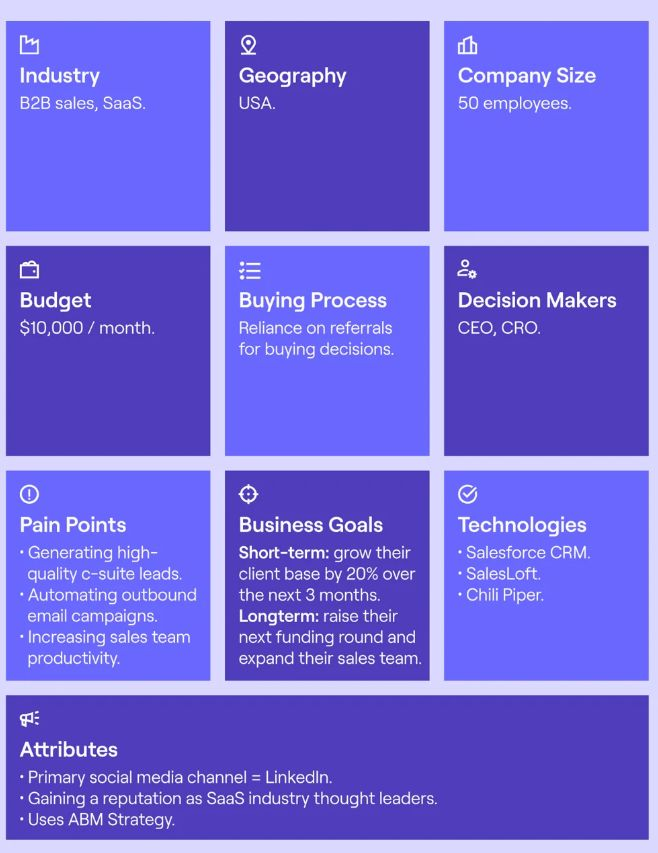
2. Create Value-Driven Content and Lead Magnets
Once you know who you’re speaking to, give them a reason to engage. A B2B lead generation funnel isn’t just about outreach, it’s about offering content that builds trust and credibility.
Some effective content ideas include:
- Industry-specific playbooks or checklists
- Case studies that show ROI in real numbers
- Webinars that solve a burning pain point
- Short guides or reports highlighting trends in your niche
Remember: The best lead magnets don’t just educate—they position you as the obvious solution.
3. Build Landing Pages Optimized for Conversions
A funnel is only as strong as the pages where you send traffic. Your landing pages should be clean, focused, and built to convert.
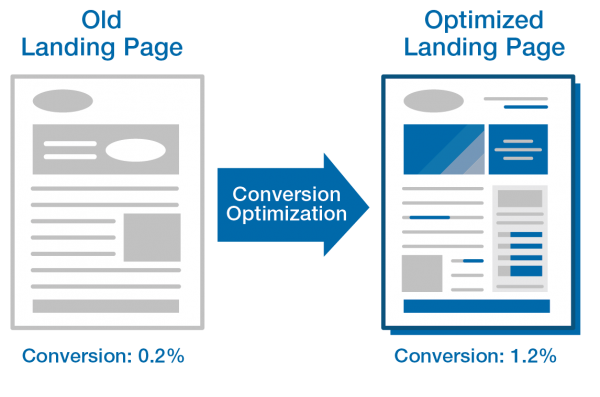
Best practices for high-converting landing pages:
- Keep the design simple with one clear CTA (book a call, download, sign up).
- Use social proof, testimonials, client logos, case studies.
- Highlight the benefit upfront, not just the feature.
- Make forms short (name, email, company, job title is often enough).
A well-structured lead generation funnel template always includes optimized landing pages, because if prospects don’t convert here, the rest of the funnel won’t matter.
4. Automate Nurturing with Personalized Email & LinkedIn Sequences
Not every lead converts on the first touch. That’s why automation is key. By setting up personalized sequences, you can nurture leads without spending hours manually following up.
Ways to do this:
- Cold email sequences with personalized subject lines and value-driven messaging.
- LinkedIn sequences that mix connection requests, value posts, and direct messages.
- Trigger-based emails that send based on behavior (like downloading a guide or visiting your pricing page).
Automation doesn’t mean robotic—it means scaling outreach while keeping it human and relevant.
5. Integrate CRM for Tracking and Follow-Ups
A B2B lead generation funnel isn’t just about generating leads—it’s about managing them properly. That’s where a CRM (Customer Relationship Management system) comes in.
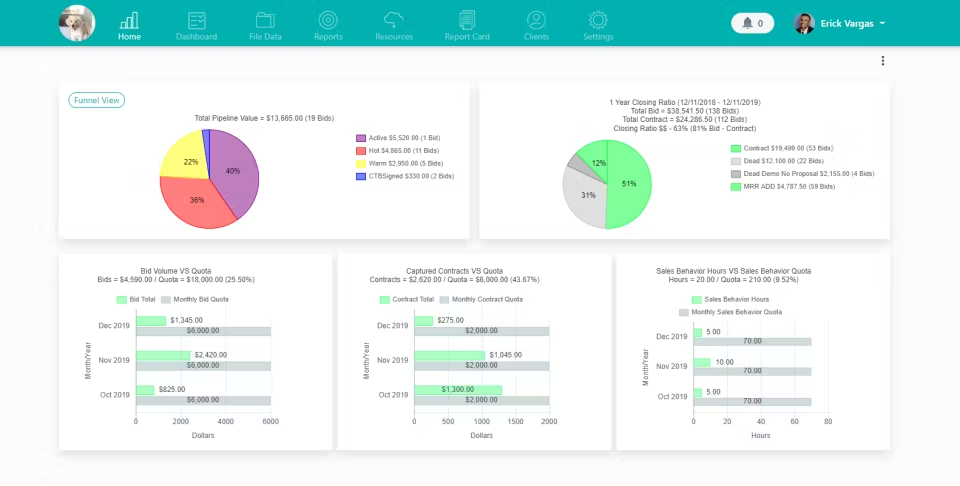
Benefits of integrating a CRM into your funnel:
- Track where each lead is in the journey.
- Automate reminders for follow-ups.
- Measure conversion rates at each stage.
- Align sales and marketing teams on the same data.
Without a CRM, it’s almost impossible to know what’s working and where leads are dropping off.
6. Leverage Cross-Channel Retargeting
Most prospects won’t convert the first time they hear from you, and that’s okay. Retargeting keeps your brand top-of-mind until they’re ready to take the next step.
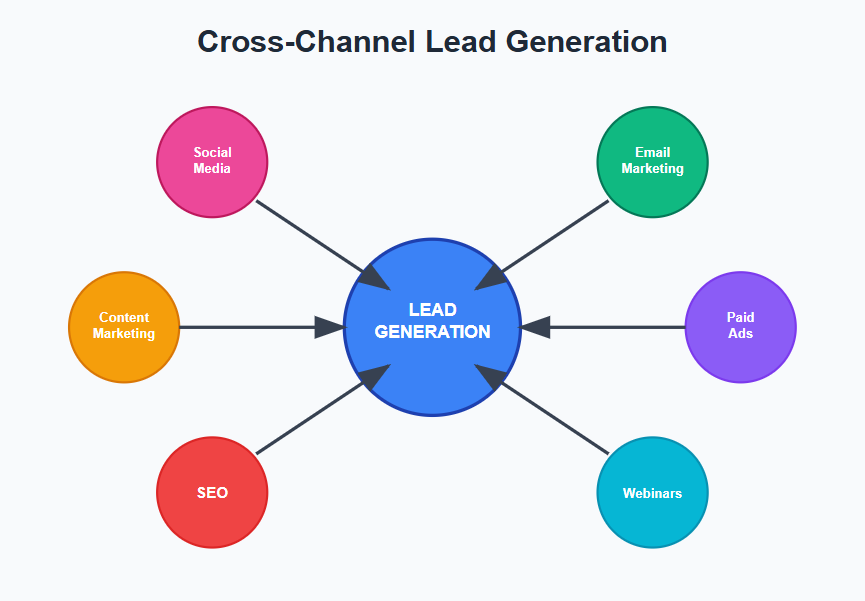
Channels you should be using for retargeting in 2025:
- LinkedIn Ads – ideal for reaching B2B decision-makers.
- Google Display & Search – for capturing demand when prospects are actively looking.
- Meta (Facebook & Instagram) – cost-effective impressions to warm up audiences.
- YouTube Ads – powerful for building trust with video storytelling.
By combining outreach with cross-channel lead generation, you create multiple touchpoints that reinforce your authority and keep leads moving toward conversion.
When you put all these steps together, you’re not just building a funnel, you’re creating a predictable lead generation engine that attracts, nurtures, and closes deals in any market.
Lead Generation Funnel Templates & Examples
Sometimes the best way to understand how a lead generation funnel works is to see it in action.
While every business is unique, the structure of a funnel is flexible—you can adapt the same framework to different industries or offers.
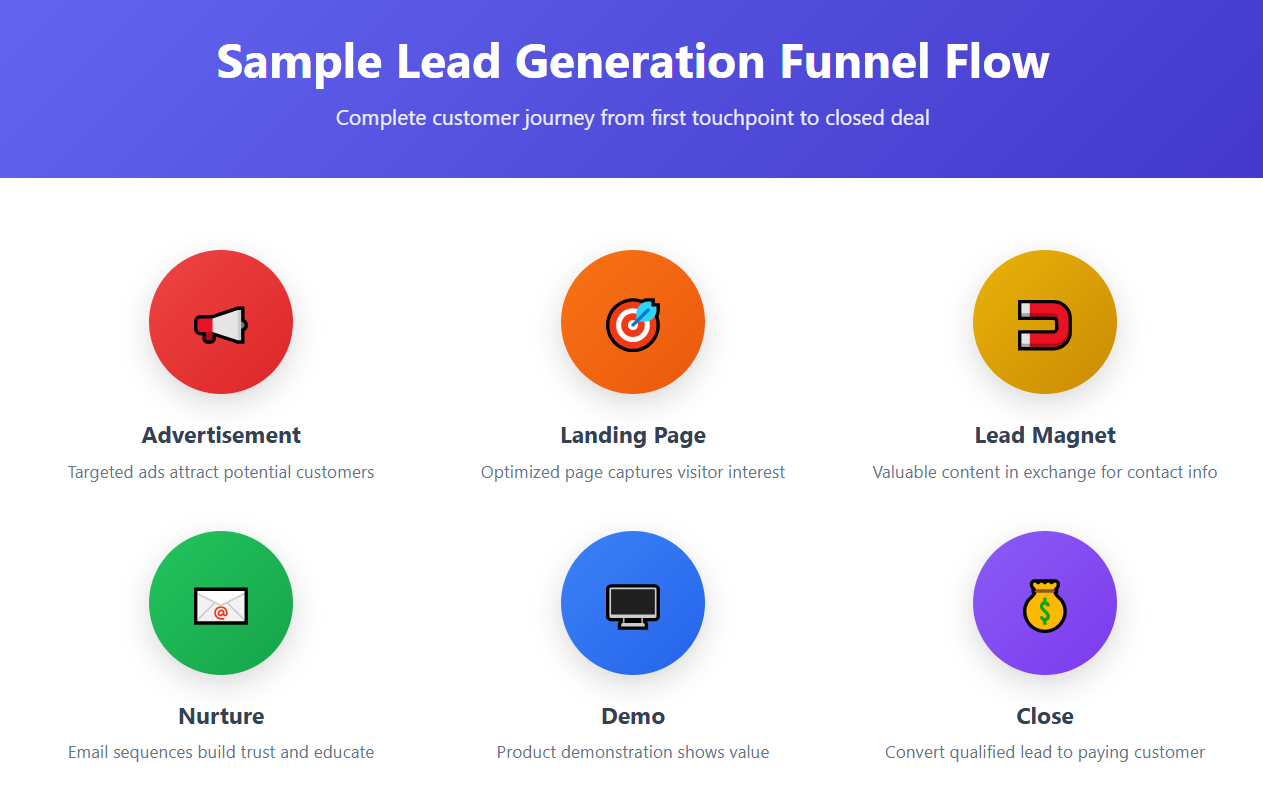
Example of SaaS Funnel vs. Agency Funnel
SaaS Funnel Example
- Awareness: Run LinkedIn ads targeting CTOs and Product Managers → Publish SEO blogs comparing tools.
- Interest: Offer a free 14-day trial or product demo video → Share case studies of customer success.
- Consideration: Send an email nurture series with feature breakdowns, ROI calculators, and comparison guides.
- Conversion: Push free trial users to upgrade with limited-time discounts → Book demo calls with sales engineers.
Agency Funnel Example
- Awareness: Outreach to founders and CMOs on LinkedIn → Run content ads promoting a guide on scaling outbound.
- Interest: Offer a free audit or “done-for-you” playbook → Share webinar on how agencies generate B2B leads.
- Consideration: Nurture with case studies, testimonials, and success metrics via cold email or retargeting.
- Conversion: Book strategy calls or consultations → Close with a clear service package and pricing.
The stages are the same, but the touchpoints and offers change depending on your business model. That’s why building the right B2B lead generation funnel means tailoring it to your audience’s buying journey.
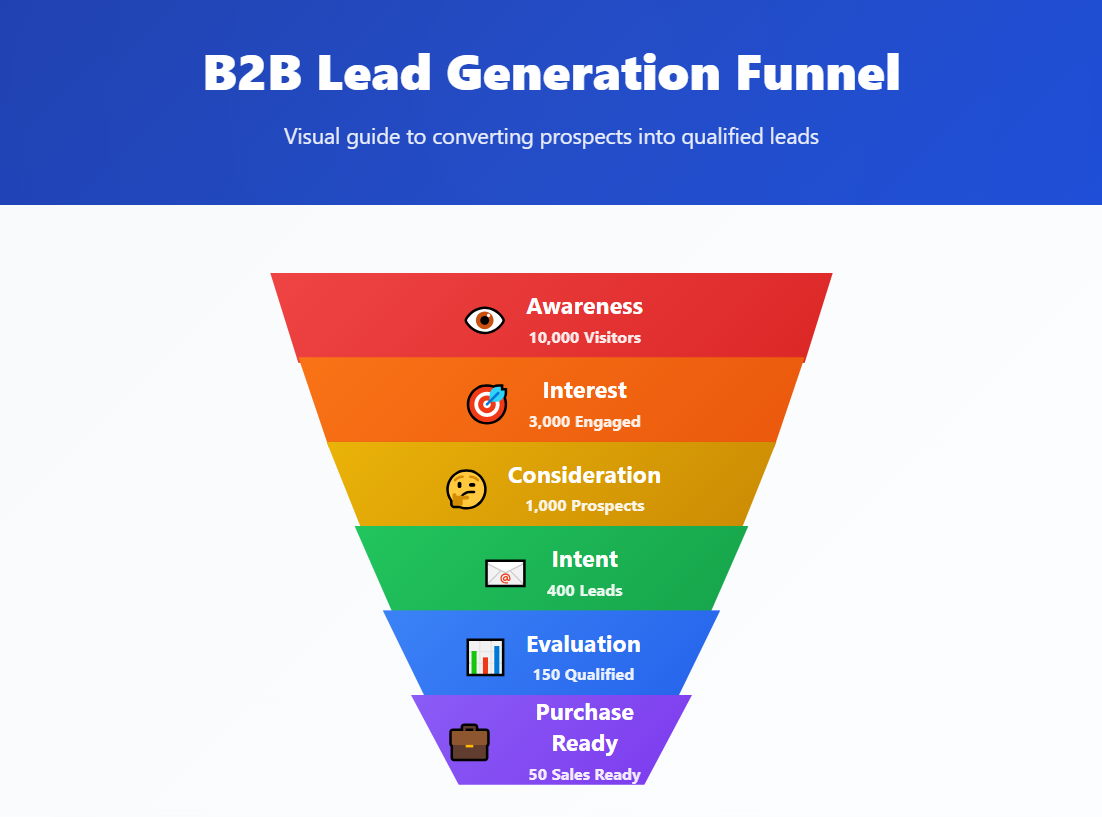
How Templates Can Speed Up Execution and Improve Consistency
Creating a funnel from scratch every time wastes time and often leads to mistakes. That’s where a lead generation funnel template comes in handy.
Templates give you a repeatable framework so you can focus more on messaging and less on setup.
Benefits of using templates:
- Faster execution – You can launch campaigns quickly without reinventing the wheel.
- Consistency – Every funnel follows proven steps, so you don’t miss critical touchpoints.
- Scalability – Once you have one funnel working, you can duplicate it for new markets or offers.
- Optimization – Templates make it easier to A/B test and improve performance over time.
Common Mistakes in Building Lead Generation Funnels
Even the best-intentioned marketers can trip up when creating a lead generation funnel. The good news? Most mistakes are avoidable once you know what to look out for.
Here are some of the most common pitfalls we see when businesses build funnels—and how to avoid them.
❌ Overcomplicating the Funnel with Too Many Steps
A funnel doesn’t need to be 10 layers deep to work. In fact, adding too many stages can confuse prospects and slow them down.
Keep it simple: Awareness → Interest → Consideration → Conversion. Each step should have a clear purpose and a natural next action.
❌ Not Aligning the Funnel with the Buyer Journey
One of the biggest mistakes is building a funnel that you think makes sense, but doesn’t match how your buyers actually purchase.
If your audience does extensive research before reaching out, you need educational content upfront. If they prefer quick decisions, your funnel should make booking a call frictionless.
❌ Ignoring Lead Nurturing After Capture
Capturing an email or connection request is just the beginning. Many companies drop the ball by not nurturing leads after the initial touch. Without consistent follow-ups—via LinkedIn, email, or retargeting ads—leads lose interest and move on to competitors.
❌ Weak CTAs at Critical Stages
A funnel without strong calls-to-action is like a road without signs. Every stage should have a clear, compelling CTA: download, book a call, join a webinar, request a demo. If your CTA is vague (“Learn More”), you’re likely leaving conversions on the table.
❌ Not Tracking Funnel Performance with Analytics
You can’t improve what you don’t measure. Without tracking metrics like conversion rates, cost per lead, or time-to-close, it’s impossible to know where leads are dropping off. Use analytics tools or a CRM to monitor performance at each stage and make data-driven improvements.
When you avoid these mistakes, your lead generation sales funnel becomes less of a guessing game and more of a predictable engine for new business.
Cleverly: Your Partner for Building B2B Lead Generation Funnels
If building a B2B lead generation funnel feels overwhelming, you don’t have to do it alone. At Cleverly, we specialize in creating and managing high-converting funnels that consistently bring in qualified leads for B2B businesses.

We’re not just another agency, we’re the only B2B lead generation agency in the world with 1,000+ Trustpilot reviews. Over the years, our strategies have generated:
- $312 million in pipeline revenue
- $51.2 million in closed revenue
- 10,000+ happy clients (including global brands like Amazon, Google, Uber, PayPal, Slack, and Spotify)
How do we do it? By focusing on the channels that actually move the needle:
- LinkedIn outreach that connects you with decision-makers at scale.
- Cold email lead generation that cut through the noise with personalization and value.
- Cold calling support to book more meetings with qualified prospects.
- Funnel optimization that ensures every stage—capture, nurture, convert—runs smoothly and predictably.
The benefits of partnering with us are simple:
- A predictable lead flow that fills your pipeline.
- Higher ROI by targeting the right prospects from the start.
- Faster results thanks to our proven funnel frameworks and cross-channel approach.
🚀 Ready to build a funnel that actually converts? Let’s talk today and we’ll help you capture, nurture, and close more B2B deals…without the guesswork!

Conclusion
A well-structured lead generation funnel isn’t just a nice-to-have in 2025, it’s the backbone of predictable growth.
By guiding prospects from awareness to conversion with the right touchpoints, you can stop chasing leads and start building a steady pipeline of opportunities.
Whether you’re running a SaaS company, agency, or service-based business, the steps are the same: define your audience, create value, nurture consistently, and optimize every stage.
And if you’d rather not spend months figuring it out on your own, Cleverly is here to help. As the most trusted B2B lead generation agency, we’ll build and manage a funnel that drives real results—so you can focus on closing deals, not chasing them.
Frequently Asked Questions



